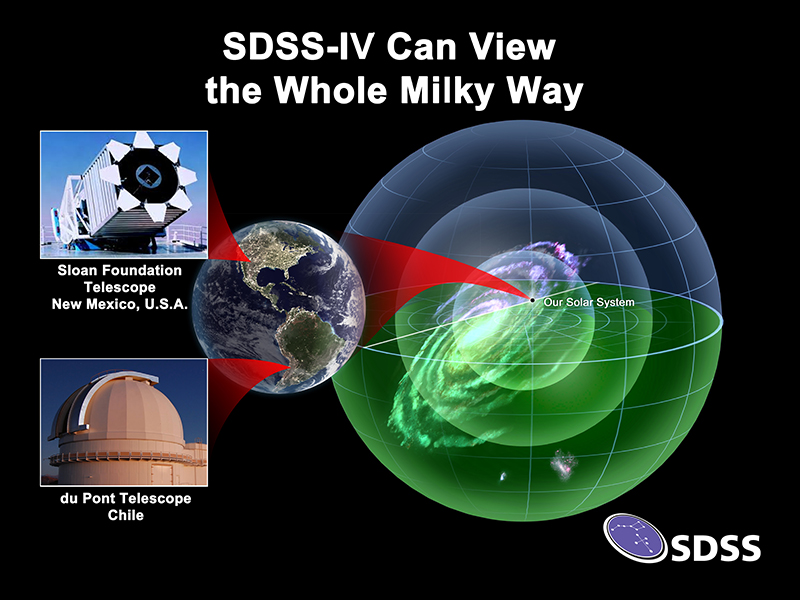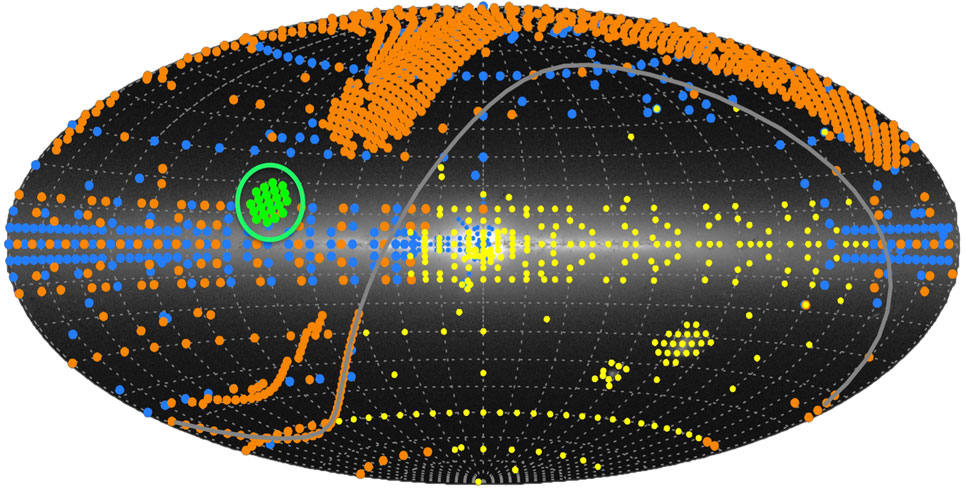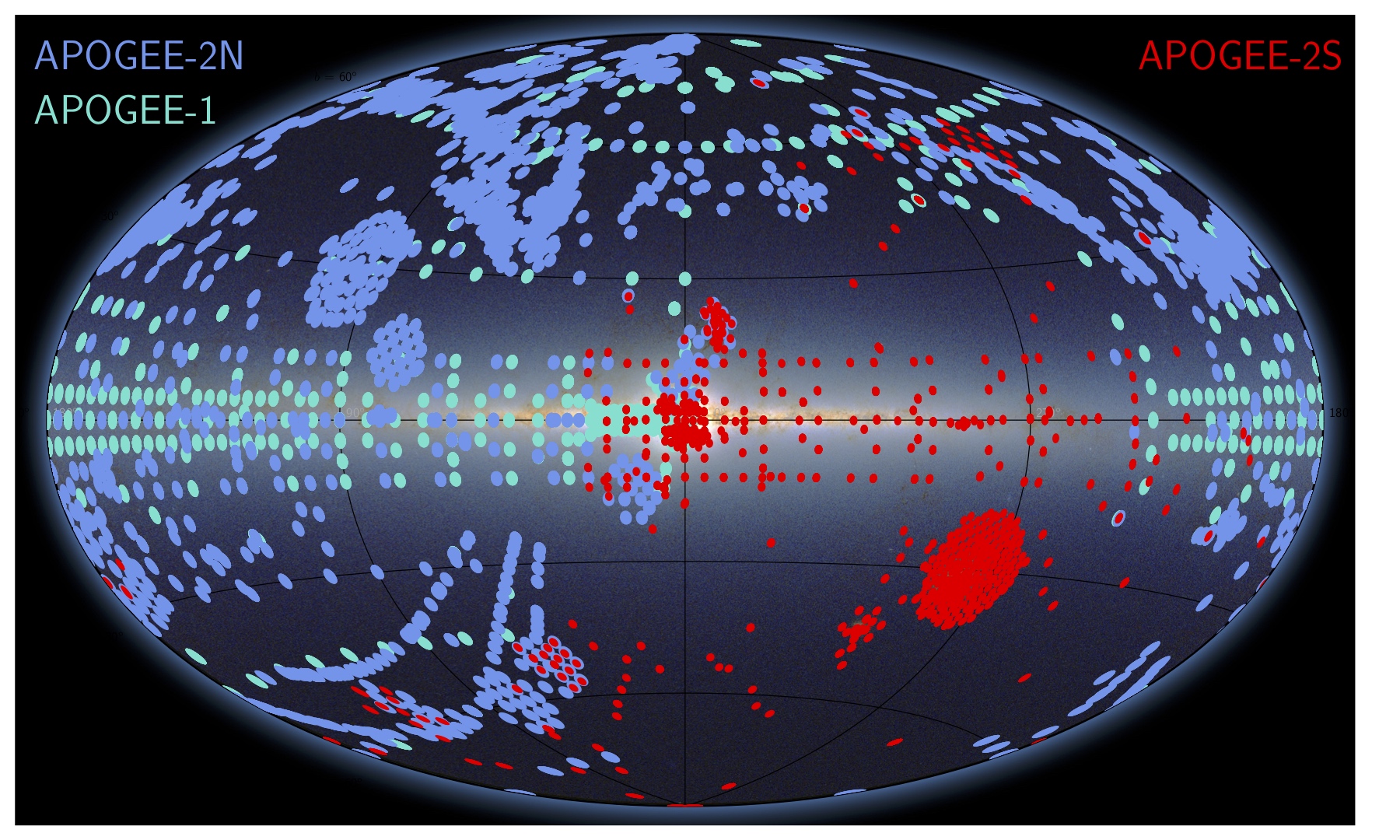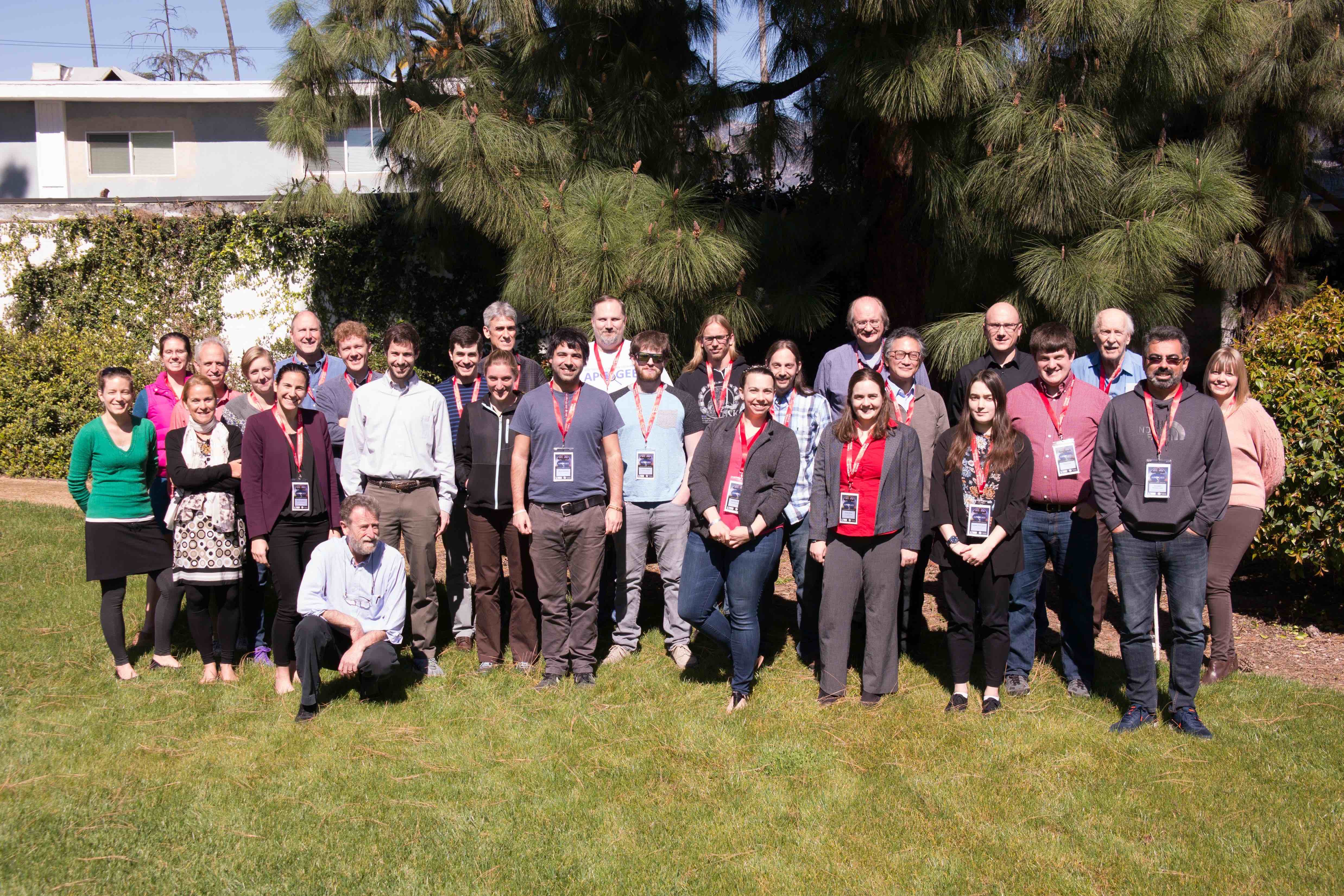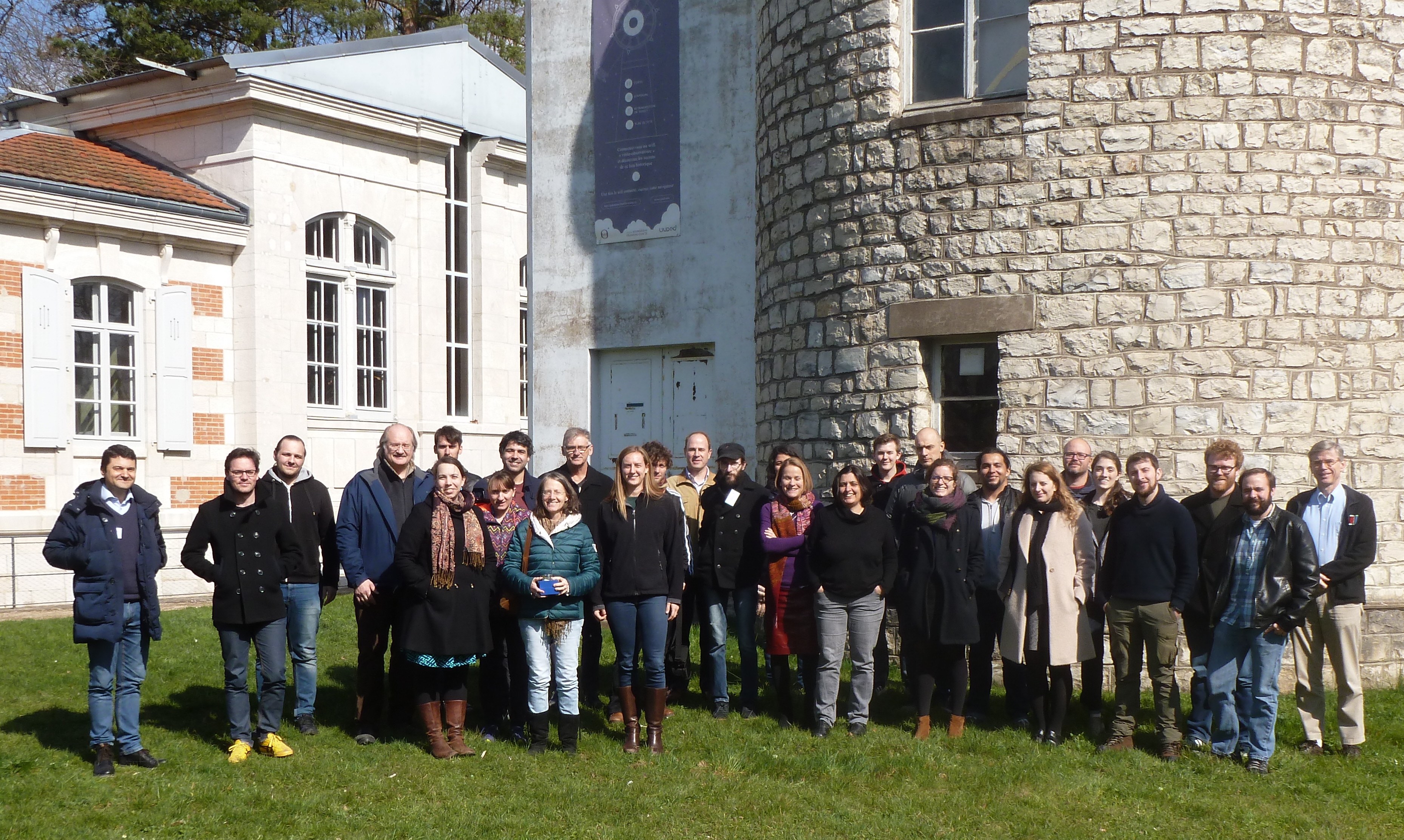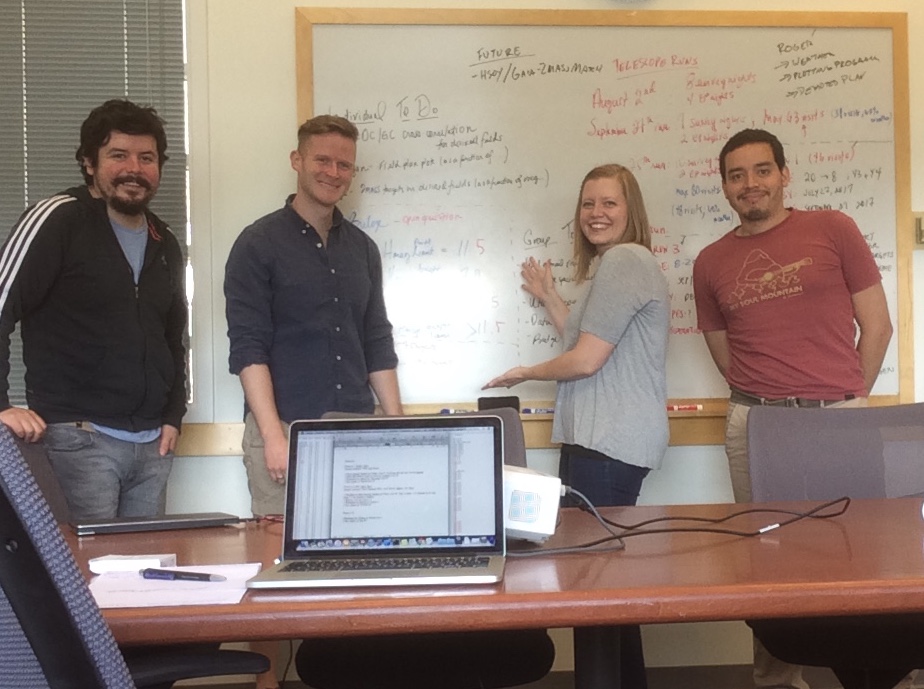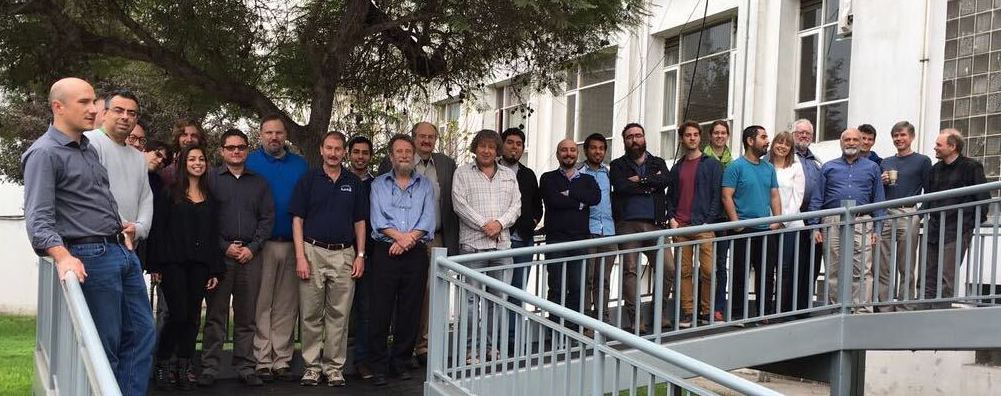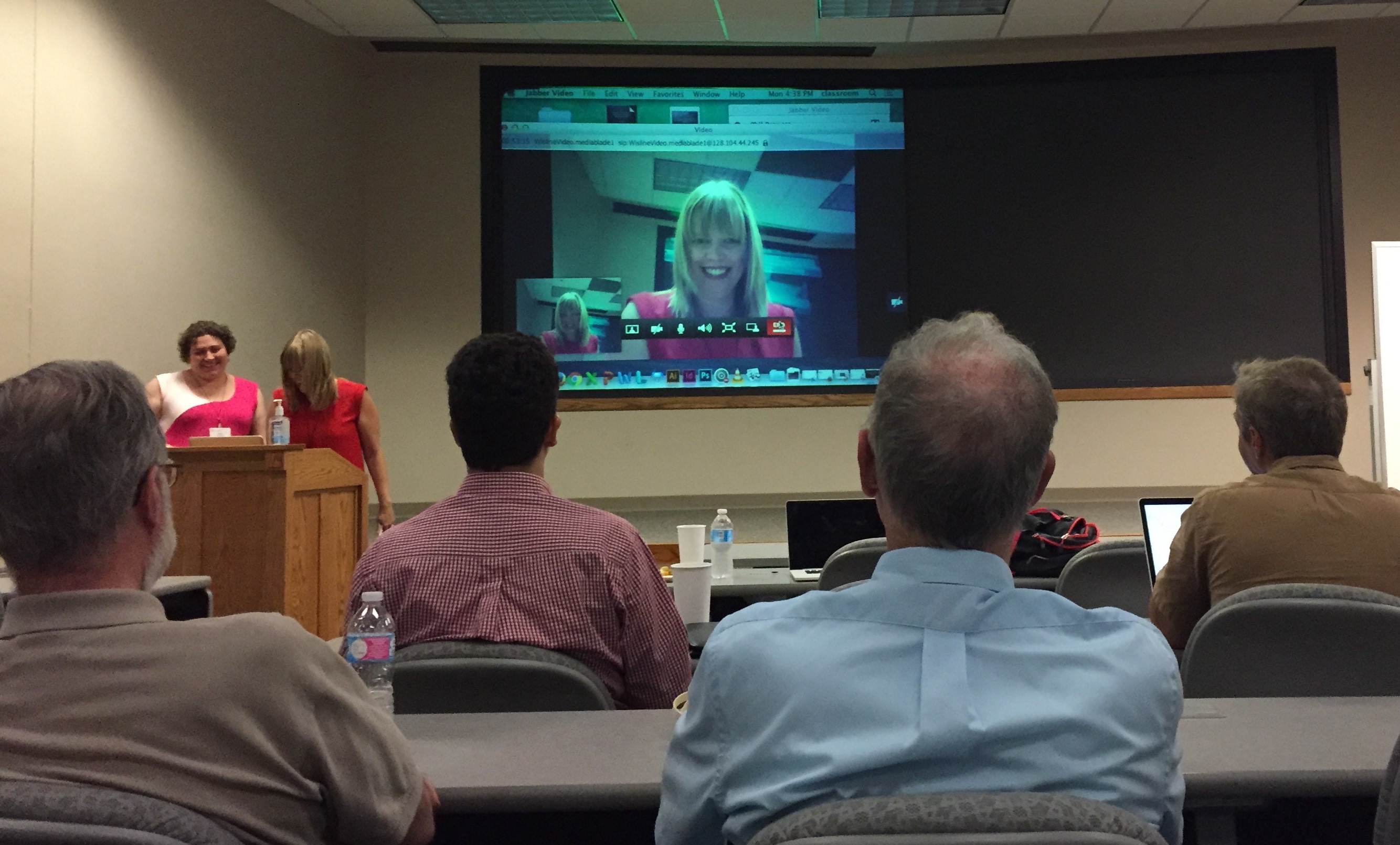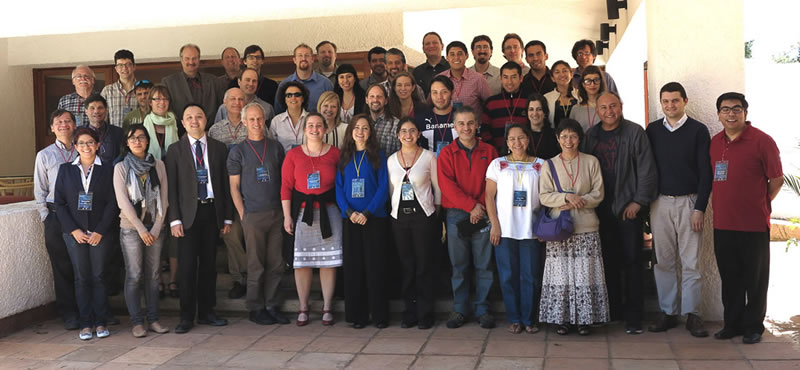APOGEE-2
Apache Point Observatory Galactic Evolution Experiment 2 (APOGEE-2)
The second generation of the Apache Point Observatory Galactic Evolution Experiment (APOGEE-2) observes the "archaeological" record of the Milky Way Galaxy embedded in hundreds of thousands of stars to explore its assembly history and evolution. The details of how the Galaxy evolved are preserved today in the motions and chemical compositions of its stars. APOGEE-2 maps the dynamical and chemical patterns of Milky Way stars with data from the 1-meter NMSU Telescope and the 2.5-meter Sloan Foundation Telescope at the Apache Point Observatory in the United States (APOGEE-2N), and the 2.5-meter du Pont Telescope at Las Campanas Observatory in Chile (APOGEE-2S).
Key Science Questions
- What is the history of star formation and chemical enrichment of the Milky Way?
- What are the dynamics of the disk, bulge, and halo of the Milky Way?
- What is the age distribution of stars in the Milky Way?
- Do planet-hosting stars have different properties than stars that have no planets?
To answer these science questions, APOGEE-2 relies upon spectroscopy of stars using near-infrared light, which can penetrate regions obscured by interstellar dust. The APOGEE-2 spectral data provide a comprehensive view of (1) element abundance distributions in Galactic stars and (2) the dynamical motions of stars at various locations throughout the Milky Way. For those unfamiliar with these concepts, we have written a primer on spectroscopy in the near-infrared and background on the Milky Way Galaxy.
In SDSS-III, APOGEE-1 predominantly observed red giant stars distributed across several kiloparsecs of the Milky Way disk. APOGEE-2 continues to observe these evolved stars and with the Southern hemisphere component, extends into previously unreachable parts of the Galaxy. APOGEE also acquires spectra of young stars and star-forming regions, variable stars, stars in star clusters and satellite galaxies, and stars with asteroseismic measurements. See APOGEE Targeting Information for more.
APOGEE-2 Dataset
APOGEE-2 Technical Details
- Observations at Apache Point Observatory and Las Campanas Observatory
- Duration: August 2014 - January 2021
- Fiber Complement: 300 fibers per 7 deg2 plate (APO 2.5-m, R=$1.5^{\circ}$) or 2.8 deg2 plate (LCO 2.5-m; R=$0.95^{\circ}$); 10 fiber (APO 1-m)
- Wavelength Range: $1.51-1.70 \mu m$
- Spectral Resolution: R$\sim$22,500
- Total Sample Size: 657,000 unique targets
- Signal-to-Noise Goal: S/N $\gt$ 100 per pixel
- Radial Velocity Precision: $\sim$200 m/s
- Elemental Abundance Precision: $\sim$0.1 dex for 20 calibrated species
Data Releases
APOGEE-2 Team
APOGEE-2 Leadership
- Principal Investigator
- Steve Majewski (UVa)
- Survey Scientist
- Jon Holtzman (NMSU)
- Project Manager
- Jennifer Sobeck (UW)
- Instrument Scientist
- John Wilson (UVa)
- Pipeline Coordinator
- Matthew Shetrone (McDonald Observatory)
- Target Selection Coordinators
- North: Drew Chojnowski (NMSU), Chris Hayes (UVa);
South: Felipe Antonio Santana Rojas (Universidad de Chile);
Special Targets & External Programs: Kevin Covey (WWU) - Survey Operations Scientists
- North: Nathan De Lee (Northern Kentucky University);
South: Penélope Longa-Peña (Universidad de Antofagasta) - LCO Operations Liaison
- Christian Nitschelm (Universidad de Antofagasta)

